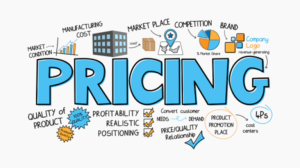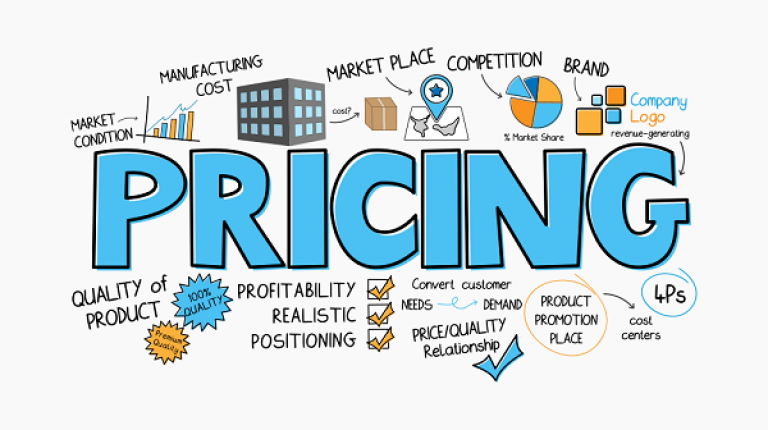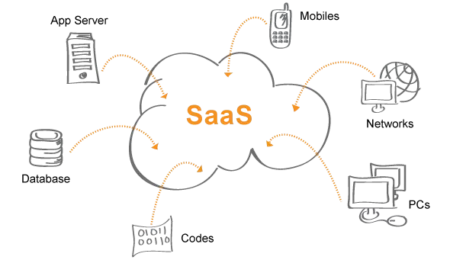Pricing Strategy: A Key Element of Your Business

Pricing is a critical aspect of any business and can have a significant impact on its success. A well-crafted pricing strategy can attract customers, increase sales, and drive profit. On the other hand, a poor pricing strategy can harm the reputation of a business, reduce sales, and lower profitability. Therefore, it is essential to have a comprehensive understanding of pricing strategy and how it can benefit your business.
Pricing refers to the process of determining the value of a product or service and setting a price for it in the market. The goal of pricing is to balance the value received by the customer and the cost incurred by the company while also ensuring that the company is generating adequate revenue to sustain and grow its business.
A pricing strategy is a plan for determining the price at which a company will sell its products or services. It involves analyzing factors such as production costs, competition, market demand, and target customers, in order to arrive at a price that meets the company’s objectives.
Types of Pricing Strategies
Cost-Plus Pricing
This strategy involves determining the cost of production and adding a markup to arrive at the final price. This method is straightforward and ensures that the business covers its costs and generates a profit.
Value-Based Pricing
This strategy sets prices based on the perceived value that the product or service offers to the customer. The idea is to align the price with the customer’s perception of the value received.
Penetration Pricing
This strategy sets prices low to enter a new market and gain a significant market share. As the market becomes more competitive, the price can be gradually increased.
Skimming Pricing
This strategy sets a high initial price to quickly recover the costs of production and generate a profit. As competition enters the market, the price is gradually lowered.
Premium pricing: setting a high price for a product or service that is perceived as being of high quality or that has a strong brand.
Psychological Pricing
This strategy involves using psychological tactics to influence customer behavior. For example, prices ending in 9 (e.g. $9.99) are often used to make a product seem more affordable.
Bundle pricing
Bundle pricing is a marketing strategy in which multiple products or services are packaged and sold together at a discounted price compared to their individual prices. This pricing technique is used by businesses to increase sales and boost customer loyalty by offering more value for the same or lower price. Bundle pricing is often used in industries such as software, telecommunications, and consumer electronics.
For example, a software company might offer a bundle that includes their productivity suite, email client, and cloud storage service for a lower price than if each product were purchased separately. A telecom company might offer a bundle that includes internet, phone, and cable services for a lower monthly price than if each service were purchased individually.
The benefits of bundle pricing include:
Increased customer loyalty: Customers are more likely to continue doing business with a company that offers them value and convenience.
Increased sales: By packaging products together and offering a discount, businesses can attract more customers and increase overall sales.
Improved product exposure: When products are bundled together, they are often cross-sold to customers who might not have considered purchasing one or more of the products individually.
Overall, bundle pricing can be an effective marketing strategy for businesses looking to increase sales and customer loyalty.
Dynamic pricing
Dynamic pricing refers to a pricing strategy where the price of a product or service changes based on supply and demand, competition, and other market factors. In other words, dynamic pricing is the practice of adjusting prices in real-time to respond to changes in the market.
Dynamic pricing is used in various industries such as e-commerce, hospitality, transportation, and entertainment. For example, an online retailer might use dynamic pricing to adjust the prices of its products based on the demand for those products. A hotel might use dynamic pricing to adjust the room rates based on the occupancy levels. An airline might use dynamic pricing to adjust the ticket prices based on the demand for flights.
Dynamic pricing can have several benefits for businesses, including increased revenue, improved profit margins, and increased customer satisfaction. It also helps businesses to remain competitive by allowing them to adjust prices in real-time based on market conditions. However, dynamic pricing can also be controversial, as some customers may feel that the prices are unfair or unpredictable.
Promotional pricing: Promotional pricing is a marketing strategy that involves offering goods or services at a discounted price for a limited period of time. The purpose of promotional pricing is to encourage customers to purchase the product or service, drive sales, clear inventory, or create brand awareness. Promotional pricing can take many forms, such as discounts, buy-one-get-one-free offers, limited-time offers, and bundling of products. It’s often used in combination with other marketing tactics, such as advertising and special events, to create a sense of urgency and drive sales.
Competitive Pricing
Competitive pricing refers to the strategy of setting the price of a product or service in line with what other similar products or services are being offered in the market. The aim of this strategy is to remain competitive and attract customers who are looking for the best value for their money.
Competitive pricing can be used in different types of markets, ranging from highly competitive markets such as retail to more specialized markets such as professional services. Companies need to take into account several factors when setting their prices, such as their costs, their target customer base, and their unique selling points compared to their competitors.
Competitive pricing can help a company increase sales and market share, as well as establish a strong brand reputation. However, it is important to be careful not to set prices too low, as this can lead to lower profits and potentially harm the company’s financial stability in the long run.
Geographical pricing
Geographical pricing refers to a pricing strategy in which a company sets different prices for the same product in different geographical locations. This strategy is used to account for differences in cost, market conditions, competition, and customer demand in different regions.
There are several methods of geographical pricing, including:
FOB (Free on Board) pricing: The price of the product includes transportation costs up to the port of shipment. The buyer is responsible for all costs incurred after that point.
CIF (Cost, Insurance, and Freight) pricing: The price of the product includes all transportation costs, as well as insurance to cover any potential damage during transit.
Zone pricing: The company divides the market into different zones and sets different prices for each zone, based on the distance from the manufacturer and the cost of transportation.
Country pricing: The company sets different prices for different countries based on differences in cost, market conditions, competition, and customer demand in those countries.
Geographical pricing can help a company to better align its prices with market conditions and increase its competitiveness in different regions, but it can also be complex to implement and may result in customer confusion or dissatisfaction if not executed effectively.
Predatory pricing
Predatory pricing is a business practice in which a company deliberately lowers the price of a product or service to a level that is below the cost of production, with the intention of eliminating competition and then raising prices once the competition is gone. This can harm both consumers and small businesses, as it creates an uneven playing field that stifles competition and innovation.
In some jurisdictions, predatory pricing is illegal and may be subject to antitrust enforcement. However, determining whether a company’s pricing practices are predatory can be difficult, as the company may argue that its low prices are the result of efficiencies or cost savings, rather than a deliberate attempt to eliminate competition.
Freemiun pricing
“Freemium” pricing refers to a business model where a basic version of a product or service is offered for free, while advanced features or additional services are available through a paid subscription. The goal of a freemium model is to attract a large number of users with the free version, and then convert a portion of those users into paying customers.
This model is often used for software products, such as mobile apps and games, as well as for online services, such as cloud storage and project management tools. Freemium pricing can be an effective way for companies to acquire a large customer base quickly and cost-effectively, as well as to generate recurring revenue from paying subscribers.
However, it’s important for companies to carefully consider their freemium pricing strategy, as offering too many features for free can make it difficult to convert users into paying customers. Additionally, companies need to ensure that the free version provides a good user experience and enough value to keep users engaged and interested in upgrading to the paid version.
The pricing strategy a company uses will depend on its specific goals and the market conditions it operates in. It is important for companies to regularly review and adjust their pricing strategies to stay competitive and meet their financial objectives.
Factors to Consider When Developing a Pricing Strategy
Cost of production: This includes the cost of raw materials, labor, and overhead expenses.
Market demand: The level of demand for your product or service can affect the price. A high demand can justify a higher price, while a low demand may require a lower price.
Competition: The prices of similar products or services offered by competitors should be taken into account.
Value proposition: The unique value that your product or service offers to customers should be considered when setting prices.
Customer segmentation: Different customer segments may have different levels of willingness to pay. Understanding these segments and setting prices accordingly can increase revenue.
Distribution channels: The cost of distributing your product or service should be taken into account when setting prices.
Tools for developing an efficient pricing strategy
Developing an efficient pricing strategy can be a complex and challenging task, but with the right tools, it can be made much easier. Here are some of the key tools you can use to develop an efficient pricing strategy:
Market research: Conducting market research is critical for understanding the target market and competitors. This information can then be used to make informed decisions about pricing.
Customer segmentation: Understanding the different segments of your target market can help you tailor your pricing strategy to meet the needs of different groups.
Cost analysis: Understanding the costs associated with producing and delivering your product or service is crucial for setting prices that are both competitive and profitable.
Price elasticity analysis: Understanding how changes in price affect demand for your product or service can help you determine the optimal price point.
Pricing software: There are many pricing software tools available that can help automate and simplify the pricing process. These tools can provide data-driven insights and make it easier to test and implement different pricing strategies.
Surveys and customer feedback: Getting feedback from customers can provide valuable insights into their needs and preferences, which can then be incorporated into your pricing strategy.
By using these tools effectively, you can develop a pricing strategy that maximizes revenue and profitability while meeting the needs of your target market.
Pricing Softwares You Can Make Use Of
There are many pricing software options available on the market, ranging from simple price comparison tools to complex pricing optimization software. Here are some examples of popular pricing software options:
Pricefx: A cloud-based pricing software that offers advanced pricing analytics and optimization tools.
Zilliant: An AI-powered pricing platform that uses machine learning to provide real-time pricing recommendations.
PROS Pricing: A cloud-based pricing software that offers advanced pricing analytics, simulation, and optimization tools.
Vendavo: A cloud-based pricing software that offers advanced pricing analytics and optimization capabilities for B2B businesses.
PriceSpective: A pricing consulting firm that helps companies improve their pricing strategy and processes through its pricing software and services.
PriceIntelligence: A price comparison software that allows businesses to monitor their competitors’ prices and make data-driven pricing decisions.
SugarCRM: A customer relationship management (CRM) software that includes pricing tools for managing quotes and pricing for products and services.
These are just a few examples of the many pricing software options available. The best option for your business will depend on your specific needs and requirements, so it’s important to carefully evaluate your options and choose the software that is right for you.
In conclusion, a well-crafted pricing strategy can play a significant role in the success of your business. By considering the factors mentioned above and understanding the various types of pricing strategies, you can develop a strategy that benefits your business and drives growth.
Subscribe below to receive business related emails.
subscribe below to receive business/consumer related emails from sumbor.







Thank you for your sharing. I am worried that I lack creative ideas. It is your article that makes me full of hope. Thank you. But, I have a question, can you help me?